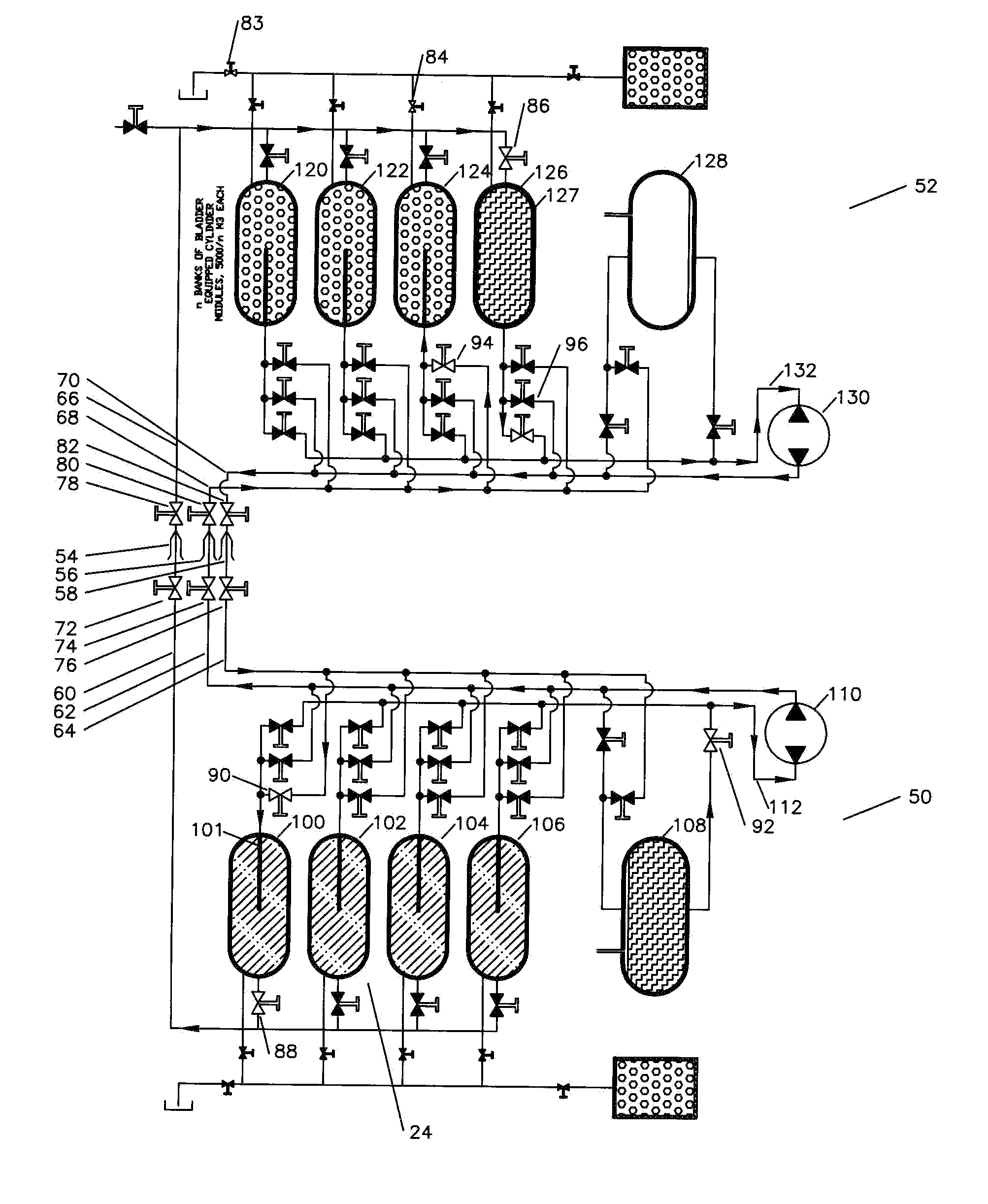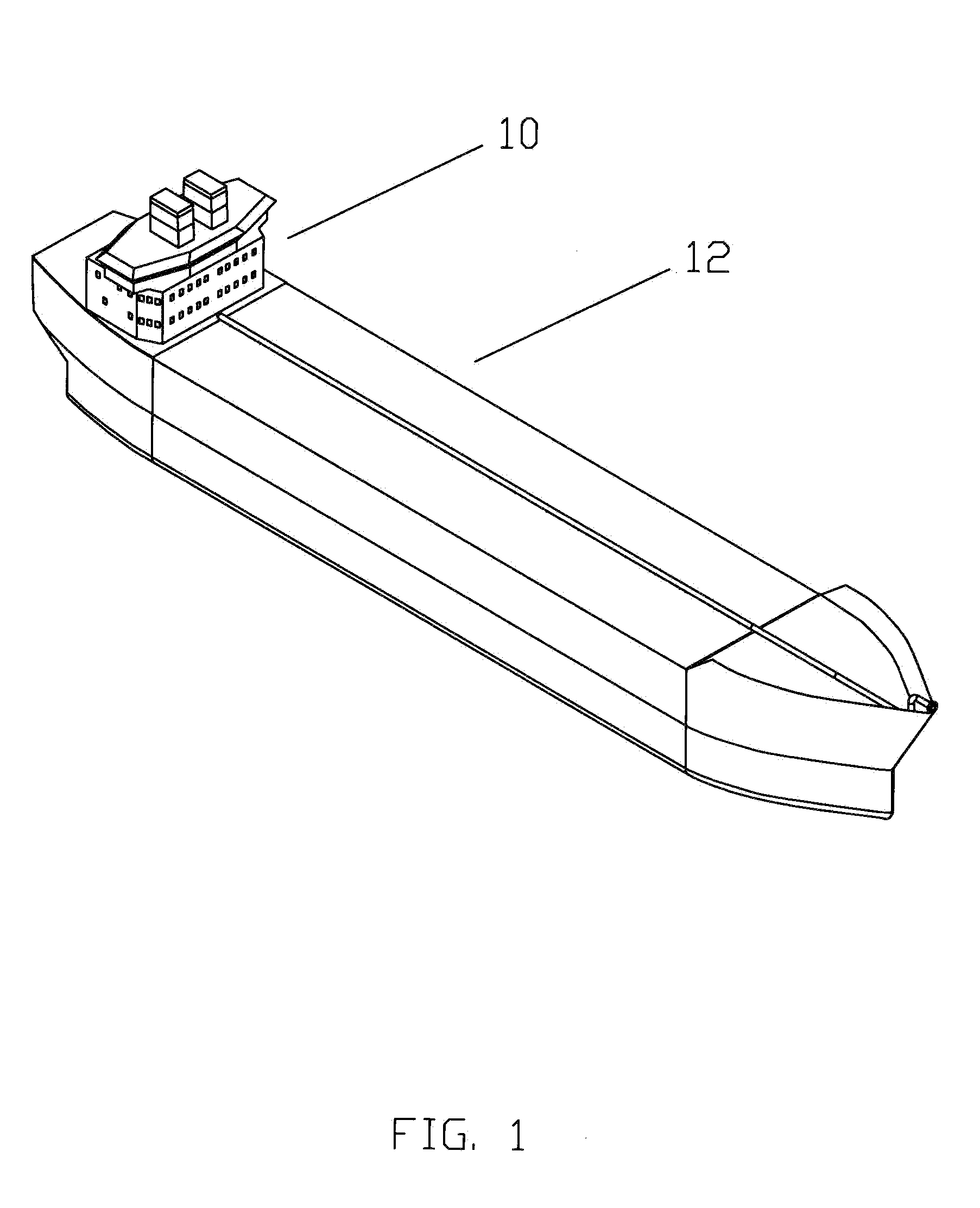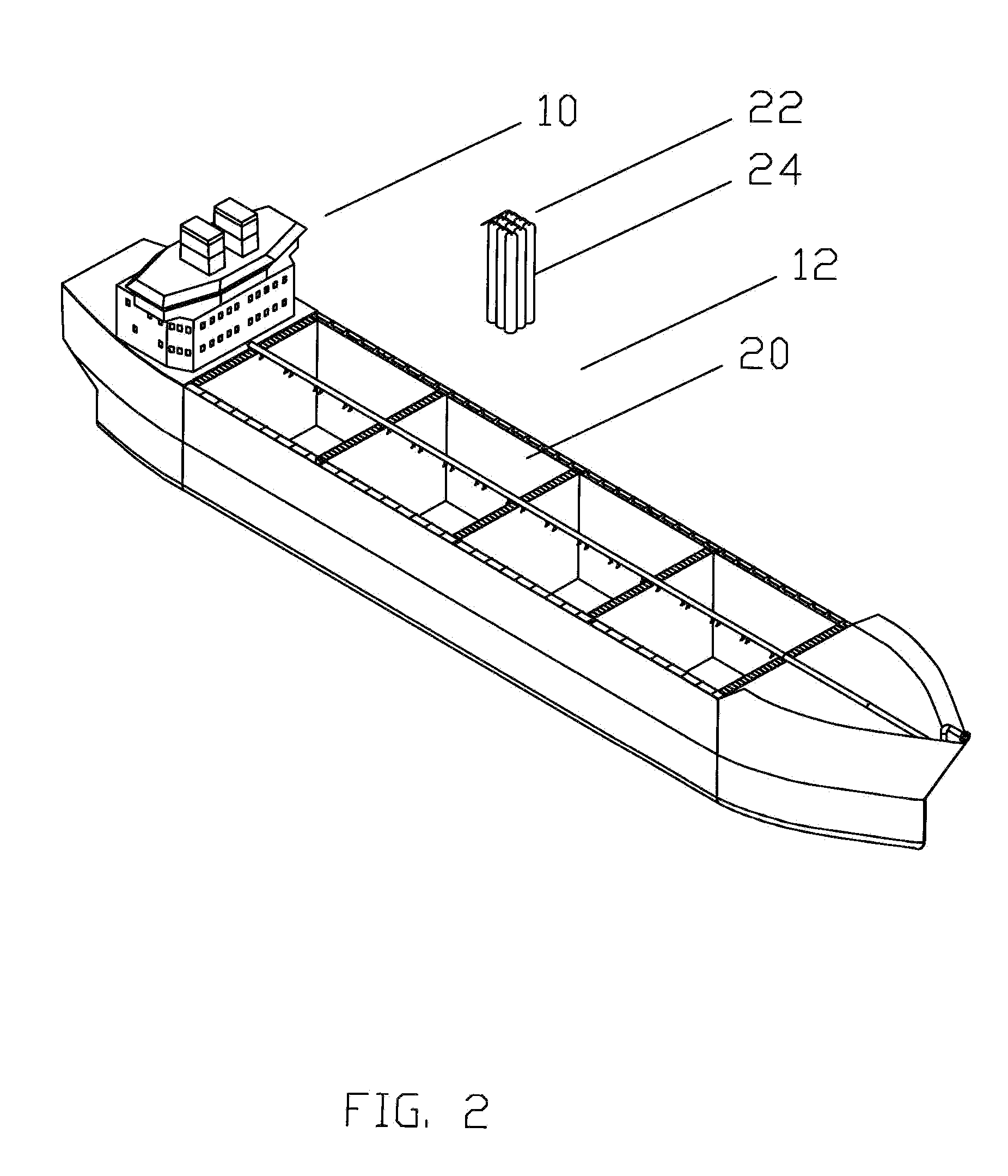Method of Fully Expelling Compressed Gas From a Tank
a compressed gas and tank technology, applied in the direction of container filling under pressure, vessel construction details, transportation and packaging, etc., can solve the problems of high cost, high labor intensity, and insufficient safety of the system, so as to reduce the transfer differential pressure and increase the safety level of the system
- Summary
- Abstract
- Description
- Claims
- Application Information
AI Technical Summary
Benefits of technology
Problems solved by technology
Method used
Image
Examples
Embodiment Construction
[0022]Referring now to FIG. 1, an offshore tanker 10 is shown which has a substantial central portion 12 which contains gas storage tanks.
[0023]Now referring to FIG. 2, the offshore tanker 10 is shown with the top cover from the central portion 12 removed and showing a number of storage chambers 20. A bank of storage bottles 22 is shown with one of the individual bottles identified as 24. Individual bottles can be of a variety of sizes, for example 24 inches in diameter by 45 feet long.
[0024]Referring now to FIG. 3, offshore tanker 10 is shown with more of the double wall covering from central portion 12 removed and a full set of bottles 22 installed. In this model 576 of the bottles 24 are shown.
[0025]Referring now to FIG. 4, a graphic of the pumping system of this invention is shown. The lower portion of the graphic shows a transportation tank system 50 for transportation of the compressed gases and the upper portion shows a stationary tank system 52. The transportation tank syste...
PUM
 Login to View More
Login to View More Abstract
Description
Claims
Application Information
 Login to View More
Login to View More - R&D
- Intellectual Property
- Life Sciences
- Materials
- Tech Scout
- Unparalleled Data Quality
- Higher Quality Content
- 60% Fewer Hallucinations
Browse by: Latest US Patents, China's latest patents, Technical Efficacy Thesaurus, Application Domain, Technology Topic, Popular Technical Reports.
© 2025 PatSnap. All rights reserved.Legal|Privacy policy|Modern Slavery Act Transparency Statement|Sitemap|About US| Contact US: help@patsnap.com



